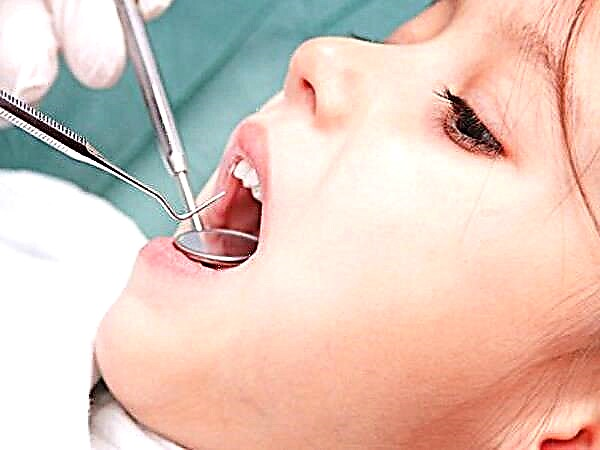
A woman who is going to become a mother for the first time is quite rightly worried and worried, afraid to miss an important moment of the onset of labor, and therefore begins to listen to her body in advance and wait for "prompts" from it. It can be quite difficult to understand your own feelings, especially if there is no generic experience. In this article we will talk about what the so-called precursors of childbirth in primiparas can be and how not to confuse them with complications of pregnancy.

"Hints" of the body - what are they?
The female body is very wise. Nature has provided for him not only great compensatory abilities, but also the ability to predict and anticipate imminent changes. This ability is most clearly manifested on the eve of childbirth. Therefore, for an attentive and observant pregnant woman, the beginning of the labor process does not come as a surprise at all.
Special specific symptoms that appear at a certain time before the onset of labor are called harbingers. In this case, not individual signs are assessed, but the general set of symptoms. Harbingers are always individual.
From the point of view of medicine, there are reliable and subjective signs. The former have a clear physiological rationale, the latter are more dependent on the sensitivity of the expectant mother, on her temperament, characteristics of pregnancy, and so on.

In any case, the combination of reliable and subjective symptoms makes it quite easy to understand that labor will begin soon.
What happens in the body
To understand where the precursors come from, you need to have a good idea of how large-scale processes take place in the female body as the date of birth approaches. It is these processes not visible to the eye that manifest themselves physiologically. The set of internal processes develops incrementally and at a certain moment leads to the onset of labor.

Almost all organs and systems, hormones, features of hemostasis, the work of the nervous system are involved in the preparatory process, but the most active changes occur in the following directions.
Uterus
The reproductive organ has already completed a very important task - it provided the child with an environment for maturation and growth. Now the uterus needs to perform another equally important task - to help the baby to be born. The uterus should reach its maximum weight. In the second half of the third trimester, the nerve-contractile apparatus of the organ begins to prepare. Without this preparation, the uterus will be an ordinary "bag" and will not be able to push the baby out or shrink to its previous size after childbirth.
To make contractions possible, the fibers of the myometrium begin to shorten, and a special kind of protein, actomyosin, begins to be synthesized in the cells of the muscles of the uterus. It is he who is responsible for ensuring the ability to contract. 1-2 weeks before childbirth, the number of nerve fibers in the uterus decreases.

Placenta
"Children's Place" is rapidly aging. After 35 weeks of pregnancy, the wilting process begins and lasts up to 40 weeks or until the moment of delivery. The placenta, a few days before childbirth, begins to produce a hormonal substance, without which contractions will not occur - oxytocin. The woman's pituitary gland helps her in this.
Hormones
During pregnancy, from the first hours of pregnancy, progesterone predominated in the woman's body. He was responsible for feeding the child, maintaining pregnancy, reducing the tone of the walls of the uterus. Before giving birth, in a few days, there is a decrease in the production of progesterone, but the concentration of oxytocin and estrogen increases. In response to a change in the hormonal balance in the body, multiple rearrangements begin, into which the nervous system is also drawn. The brain becomes less sensitive to nerve impulses, while the sensitivity of the spinal cord, on the contrary, increases.

Metabolism
The body, shortly before childbirth, stores substances that should provide childbirth, in terms of energy potential. Glycogen and electrolytes are stored.
Blood condition
The blood gets thicker. The number of platelets increases, the time of blood clotting decreases. This is necessary in order to prevent lethal bleeding during childbirth. The extent to which these processes affect the well-being of a pregnant woman depends on her individual sensitivity.

Features of the approach of the first birth
The harbingers of "first-born" and more experienced women who give birth not for the first time will be different. First of all, the timing of its onset. The first precursors in women before the second or third birth usually appear in a few days, at 38–39 weeks, or even at 40 weeks. Primiparas will have to wait longer - symptoms of an impending birth may appear two or 4 weeks before the expected date of birth. This is due to the fact that all preparation at the physiological level lasts longer before the first birth.
The tissues and muscles of the woman giving birth for the first time are less elastic. The nervous system takes longer to prepare for the birth process. In most cases, women before the first birth are more nervous and worried, and therefore they themselves interfere with their nervous system and create muscle "clamps". For the same reasons, the first birth is usually longer than the second or third.
How long do the harbingers most often start? If the first birth is coming, then waiting for signs of their approach is about 35-36 weeks or a little later. Are Harbingers Necessary? Optional. There are women who claim that they did not feel anything unusual before giving birth. This does not mean that their body was not prepared for the process, this is a manifestation of individual characteristics of perception.

How long to wait for childbirth after the first harbingers is also a question in which there is a lot of individuality. It all depends on the pace at which the body will overcome the stages of preparation. The first birth is usually as close as possible to the estimated date of birth (PDD). It is difficult to say more precisely, options for childbirth are possible at 39–40 weeks, and possible at 41–42 weeks.
If there are no harbingers, this does not mean that childbirth must necessarily be delayed. Too early onset of symptoms before 34 weeks of gestation is often a sign of a threat of premature birth.
Signs
In search of warning signs, the fantasy of a primiparous woman can lead her into such jungles, from which it will be difficult to get out. Women who do not have generic experience tend to think out and feel something that actually does not exist, or mistakenly perceive any changes in well-being for harbingers. Let's take a closer look at what real warning symptoms can be:

Abdominal prolapse
Usually this harbinger is considered one of the first. From the point of view of doctors, it is quite reliable and informative, that is, it really indicates the approach of childbirth. Abdominal prolapse is a consequence of the lowering of the baby to the very bottom of the uterus. Closer to childbirth, the baby takes the position from which he has to begin a difficult journey through the birth canal after the cervix is opened. The child presses his head against the inner pharynx.
The woman notices that the stomach has begun to look a little different, its shape has become more elongated. And if earlier it looked like a basketball, now it looks more like an elongated melon or a rugby ball. Due to a decrease in the height of the uterine fundus, the load on the diaphragm weakens, it becomes easier to breathe, shortness of breath and heartburn cease to torment.

While there is a visible improvement, there are also disadvantages, which will not be long in coming either. After lowering the abdomen, a woman begins to run to the toilet more often for "little need" due to the pressure of the fetal head on the bladder, and the pelvic bones ache more.
At the first birth, this symptom is most often observed about 2-3 weeks before birth. But it is observed, by the way, not every expectant mother. With multiple pregnancies, the prolapse of the head of the fetus, which will be born first, is practically not felt by the woman. And also there will be no prolapse in those whose children in the uterus are located not in the head, but in any other position - sitting or placed across.

If polyhydramnios was diagnosed during pregnancy, abdominal prolapse will also not occur before childbirth.

Weight loss
Women have long noticed that shortly before childbirth, the weight decreases by 2-3 kilograms. Physiologically, this phenomenon is quite easily explained - the concentration of progesterone decreases in the body, which, among other things, contributed to the accumulation of fluid in organs and tissues. With a decrease in the level of the hormone, the amount of intercellular fluid also decreases, and therefore the weight begins to go away.
A decrease in the amount of amniotic fluid can also be attributed to 2-3 kilograms of claim. The closer to childbirth, the less water the amnion produces. This measure is necessary so that the fetal bladder does not burst prematurely due to increased intrauterine pressure, since the baby is gaining weight every day and takes up more and more space in the uterus.
In addition, diarrhea may begin, because the body strives with all its might to get rid of the excess, so that the woman can feel better.


The nature of the discharge
Discharge from the genitals is a rather important diagnostic sign. All women know about it. A few weeks before giving birth, they change their character. During pregnancy, there was a so-called dry period, when, under the influence of progesterone, there was little discharge, they were thick and scanty. As soon as the concentration of progesterone begins to decrease, the genital tract is one of the first to "show" that the conditions inside the body have changed. Vaginal secretion becomes more fluid and abundant.
The discharge of the mucous plug deserves special attention. It closes the cervical canal and protects the baby from germs and viruses throughout the gestation period. But before childbirth, when the cervix begins to ripen, the plug comes out, because it cannot be held inside the dilated cervical canal.


If it comes out one-time and in full, then it is quite difficult not to notice it - a large, gelatinous clot of yellowish or milky color, sometimes with blood streaks. But quite often the plug leaves the cervical canal in parts, and then they talk about the partial and systematic discharge of the mucous plug.
Usually, during the first pregnancy, the cork leaves its place 5-7 days before delivery. The fact that this process has taken place or has started, the woman must definitely inform the attending physician. As soon as the plug leaves the cervical canal, some prohibitions will be imposed on the life of the pregnant woman - she will not be allowed to lie and bask in a warm bath, as well as have sex, in order to exclude the penetration of infections into the uterus.


Chest
The mammary glands of primiparous women, shortly before the onset of labor, become more sensitive, the breasts begin to hurt more. The chest is "filled", through the skin clearly visible blue vein lines. The parasitic circles expand, become large, blurred, "Montgomery tubercles" appear on them.
In primiparas, colostrum first begins to excrete for the first time a few weeks before the birth of the child. You do not need to be afraid of this, you also cannot squeeze it out. If there is no colostrum, then again, this is not an indicator that there will be little or no milk after childbirth.
The breast is prepared for women on an individual basis. In some, from the first month of pregnancy, it hurts and colostrum is excreted. For others, the breasts do not look painful even before childbirth. Therefore, this symptom alone cannot be a reliable symptom of approaching labor.

In any case, the mammary glands require special care - they should be washed twice a day with warm water, and if colostrum is secreted, wear special liners in the bra so as not to stain your clothes.
Mood and emotions
The mood and well-being of the expectant mother is influenced by her hormonal background, as well as the psychological readiness for the birth of a child. Very often, a couple of weeks before childbirth, a woman begins to experience unreasonable anxiety, anxiety. Anxiety may increase as the due date approaches.
A harbinger can be conditionally considered a state of emotional instability, when the mood of a pregnant woman begins to change spontaneously and almost uncontrollably. Quite often, according to expectant mothers, the quality of sleep is disturbed. Women suffer from insomnia.
Such symptoms require medical attention. Herbal sedatives approved by the doctor will help with anxiety and anxiety. They will also help improve falling asleep, because getting enough sleep is a very important condition for successful preparation for childbirth, in order to exclude violations of the level of blood pressure during childbirth. In addition to light sedative teas and pills, airing the bedroom and walking in the fresh air before bed will help.


Fetal activity
Babies usually calm down before giving birth, become less mobile. This symptom is most often observed 3-5 days before delivery. It becomes difficult for the child to move, it is already extremely cramped in the uterus. In addition, there are suggestions that by decreasing activity, children start a regimen of rest and energy accumulation in their own body, because in the process of childbirth, the baby also has to work.

Cervix
Ripening of the cervix is considered one of the surest signs of approaching labor. The mature neck is shortened, smoothed, its length does not exceed 1-1.5 centimeters. In the process of cervical ripening, the nature of cervical mucus changes, and a woman can also feel light tingling sensations, a slight "stretching" in the lumbar region. But assessing the maturity of the cervix is the task of the obstetrician. This sign will be checked at a planned doctor's appointment starting from 38 weeks of pregnancy.
In case of insufficient maturity or immaturity of the cervix, the woman is offered hospitalization at 39 weeks of gestation for preliminary drug preparation of the cervix for childbirth.

Other signs
Among other signs, which, rather, belong to the category of subjective, one can note such an optional, but rather striking sign, as the manifestation of the ancient animal instinct for nesting. Before the offspring appear, many females of different animal species prepare a nest (burrow) in order to ensure a higher survival rate for the young.
In humans, this instinct is manifested by an irresistible desire to wash something in the apartment, paint, iron and wash. A couple of weeks before giving birth, a woman begins to intensively equip her home. Psychologists believe that this behavior is quite normal and, in addition to following the instinct of the ancestors, it gives a woman inner peace, the ability to reduce anxiety and fears, and distract from thoughts about the upcoming birth.
And also the signs include an increase in the number of training (false) contractions, a change in appetite. Either the woman begins to eat constantly, unable to cope with the feeling of hunger, or a few days before giving birth, she does not want to eat at all.


Labor sign or pathology?
Observing her own condition, a woman should not forget that many of the symptoms that she can intuitively associate with the preparation of the body for childbirth, in fact, may be signs of complications of pregnancy in the late stages. In order not to be mistaken, in all doubtful cases it is best to consult with an obstetrician-gynecologist who can easily distinguish one from the other.
So, too strong pulling pain in the lower back and in the lower abdomen can be a dangerous sign of the risk of premature birth, and too much weight loss can indicate metabolic disorders. In cases of the appearance of unusual discharge of green, brown, gray color, discharge with an unpleasant odor, itching in the genital area, you should immediately consult a doctor, since such discharge is not a sign of approaching labor, but a sign of a woman's infection.
Loose stools and nausea can be not only a sign of cleansing the body before childbirth, but also a sign of food poisoning, as well as a symptom of intestinal infections. And the activity of the fetus may decrease not only due to the upcoming birth, but also due to oxygen starvation of the fetus.


Therefore, it is important to ask all questions of interest to a qualified doctor.
Reviews
Some young mothers, remembering the harbingers of their own first birth, note that they practically did not feel anything. And only then, recalling the events of the last days before the birth, they noted that the signs were still there, they just went unnoticed.
The most frequent precursors, according to reviews, are the discharge of the mucous plug and the abdominal prolapse. And also women recommend primiparas to pay attention to the general emotional background. Very often, a few days before the start of labor, pregnant women experience unexplained tears and even tantrums, they feel lonely and offended.

For precursors of childbirth at 34-38 weeks of gestation, see the next video.



